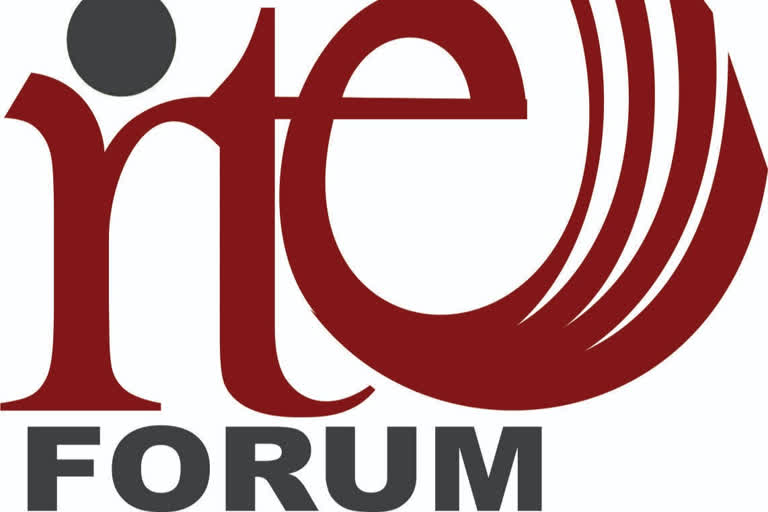New Delhi: Reacting to the Union Budget 2021-22 presented on Monday by Finance Minister Nirmala Sitharaman, National Coordinator of the Right to Education Forum, Ambarish Rai said that the budget has once again disappointed.
The country's public education system was already facing a lot of challenges. Meanwhile, global epidemics like Covid-19 have also adversely affected the education sector. In such a situation, it was necessary that the government would announce more than usual and additional covid packages in the field of education so that the needs of millions of children were protected for the basic rights of education, health, nutrition and life.
We have always demanded that ten per cent of the total budget and 6 per cent of the gross domestic product should be spent on education. But, in contrast, in this budget, only Rs 93,224 crore has been allocated against the total education budget of Rs 99,312 crore in the previous year. This is Rs 6,088 crore less than the previous allocation.
It is strange that in the current financial year 2021-22, the budget allocated for the overall education campaign is 31,050 crores, which is less than the actual expenditure of 32,376.52 crores in 2019-20. If we look at the allocation under National Education Mission (Samagra Shiksha Abhiyan and Teacher Training and Adult Education) in the last year 2020-21, only 31,300 crore has been allocated this time against 38,860 crore.
Also read: Budget: 15,000 schools to include all components of NEP
The new education policy referred to the Gender Inclusive Fund for promoting girl education which is not discussed in the budget. Rather, the amount given under the National Scheme for Incentive for Girls studying in Secondary Schools (National Scheme for Incentive to Girls for Secondary Education) has been reduced from Rs 110 crore to Rs 1 crore last year.
Rai expressed disappointment that instead of increasing allocation to strengthen an inclusive public education system, the government is paving the way for privatization and PPP model in education.
This neglect will adversely affect children, particularly poor, marginalized communities and girls, as well as the increasing number of out-of-school children in India. The commitment to universalize education from pre-primary to higher secondary level to all children, in view of the goals set according to the Sustainable Development Goal (SDG) 2030 and the recommendations of the recently arrived National Education Policy, 2020, is half-complete.
What was the expectation that was not found in this budget
If the government really intends to strengthen and revive the public education system, it should be extended to the Right to Education Act, 2009 to ensure free and compulsory education for all children from pre-primary to class 12 (3-18 years). In view of this, the emphasis should have been on adequate budget allocation.
17.1% of the posts of teachers in the country's schools are vacant (out of the total sanctioned 61.8 lakh posts, 10.6 lakh posts remained vacant in the academic year 2020-21) which need to be filled immediately. According to data from U DICE 2016-17, 18% of teachers do not meet the Education Rights Act, 2009 standards in terms of qualifications, whose training and regularization work is still incomplete.
Online education has also created a huge gap of inequality, as 80 per cent of the villages and poor children living in cities, which includes a large number of girls, lack access to computers, laptops, smartphones and proper resources for education.
Also read: Ramesh Pokhriyal launches ASEAN-INDIA Hackathon
There is talk of the opening of schools after the Corona period and it is feared that 25 to 30 per cent of the children will drop out of schools. On the other hand, the Right to Education Act 2009 providing basic rights of education to children has been implemented in only 12.7% of schools even after 11 years. Still, 52 to 54 per cent of our schools are struggling with a lack of basic facilities where there is no clean drinking water, hand washing facilities and useable toilets.
Economic resources were needed more than ever to deal with all these woes. There is no doubt that without economic resources, neither the Right to Education Act can be fully implemented nor the implementation of the new National Education Policy recently adopted by the Cabinet. But the government, in its budget address, by making a reference to the opening of 15000 model schools, 750 Eklavya schools and 100 Sainik schools in the PPP model to be made in accordance with the National Education Policy, wants to shift from its responsibilities towards crores of children.
The Right to Education Forum believes that this budget will push the future of crores of children into darkness, handing over schooling in the hands of private and corporate houses on the lines of the higher education system and upholding the education of children of common citizens. This budget raises serious questions on the government's commitment to public education and child rights.



